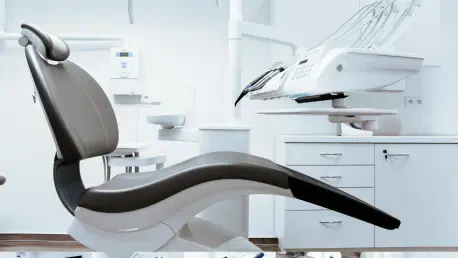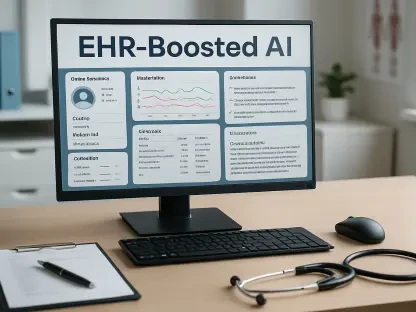James Maitland’s innovative approach to robotics and IoT applications in medicine has been instrumental in transforming healthcare solutions. His extensive expertise drives an understanding of the complexities faced by foreign medical device manufacturers striving to enter the US market. This interview delves into the challenges and strategic elements pivotal for navigating this intricate landscape.
Can you describe the unique challenges that foreign medical device manufacturers face in the US procurement market?
Foreign manufacturers find the US procurement market quite daunting mainly due to its fragmented structure. Unlike many centralized healthcare systems worldwide, the US consists of a multitude of independent entities such as hospitals, clinics, and purchasing organizations, each with unique buying criteria. This decentralized model demands a thorough understanding of various decision-making processes and the ability to adapt to diverse buyer motivations.
How does the decentralized structure of the US healthcare system impact procurement decisions for medical devices?
The fragmentation means that procurement decisions are highly variable and independently driven, often influenced by factors beyond technical merit. Manufacturers must navigate relationships across different stakeholders, each with distinct priorities. Often these include clinical utility, cost-effectiveness, and alignment with reimbursement pathways—a challenge for those unaccustomed to such varied demands.
What are some of the critical regulatory requirements that foreign medical device manufacturers must meet to succeed in the US market?
Achieving FDA clearance is just the beginning. Crucially, manufacturers need to establish a robust regulatory infrastructure, including enlisting a registered US agent and an initial importer. Compliance with traceability and post-market surveillance requirements is pivotal for operational credibility and instills confidence in potential buyers who are keen on legal accountability and clarity.
Why is FDA clearance not enough to guarantee market access for medical devices in the United States?
FDA clearance provides regulatory validation but doesn’t ensure acceptance in a competitive market. Stakeholders often assess devices beyond compliance, focusing on practical aspects like reimbursement readiness and clinical effectiveness. A device might meet regulatory standards yet struggle without a defined reimbursement pathway or proven cost-effectiveness in real-world applications.
How important is a reimbursement pathway, and why can it affect a device’s acceptance in the US?
Reimbursement pathways are crucial as they directly influence a device’s marketability and accessibility. Without established billing codes, even clinically innovative devices may face significant hurdles. Reimbursement structures assure buyers of financial viability and sustainability, making them indispensable for achieving consistent adoption across various healthcare setups.
Could you explain the importance of having a registered US agent and a designated initial importer for foreign firms?
These roles are pivotal for ensuring regulatory compliance and establishing a presence that aligns with US operational standards. A registered agent manages necessary regulatory interactions, while an initial importer addresses logistics and accountability, providing assurance to US buyers of the manufacturer’s commitment to managing compliance-related aspects locally.
What is the significance of traceability and post-market surveillance in the procurement process?
These elements are essential for maintaining product integrity and accountability post-purchase. Traceability ensures products can be tracked accurately through their lifecycle, from shipment to usage, while surveillance provides valuable insights for detecting and addressing adverse events, fostering buyer trust by mitigated risk and enhancing safety assurance.
How can a lack of clarity around responsibilities delay the purchasing process in US hospital systems?
Without clear assignments for compliance and operational responsibilities, potential buyers may face hesitation. Hospitals adhering to rigorous internal policies require explicit assurances that all procedural requirements are met, and any ambiguity can delay transactions, especially in sensitive healthcare environments demanding high standards of reliability.
What are the expectations of US healthcare facilities in terms of delivery times, inventory accuracy, and transparency?
US healthcare facilities demand exceptional service standards, emphasizing timely delivery and precise inventory management. Transparency across operations is critical, not only ensuring efficiency but also bolstering trust and credibility. Compliance with these expectations often determines the reliability upon which procurement decisions rest.
How does strategic warehousing contribute to successful supply chain management for medical devices?
Strategic warehousing directly influences fulfillment efficiency and reliability. It ensures products are stored optimally and accessible as required, mitigating shipment delays and minimizing inventory lapses. Such precision is vital for maintaining uninterrupted operations and fulfilling buyer expectations in device-heavy contexts.
What role do consignment models play in the procurement of medical devices, and why are they popular in device-heavy specialties?
Consignment models allow dynamic inventory management, reducing capital expenditure and aligning supply with demand fluctuations. They’re particularly advantageous in device-heavy specialties, ensuring ready access to necessary equipment without upfront purchasing commitments, offering flexibility valued by procurement teams.
How can misalignment in invoicing and billing affect relationships with US hospitals?
Invoicing discrepancies can severely strain relationships. Each hospital operates under specific fiscal protocols, and deviations lead to payment delays and potential mistrust. Manufacturers need meticulous alignment with hospitals’ financial systems to assure seamless transactions and foster lasting partnerships.
What operational elements should foreign manufacturers focus on to establish credibility in the US market?
Focus on regulatory adherence and logistical precision are essential for establishing credibility. Manufacturers should integrate comprehensive compliance processes while optimizing logistics for efficiency, ensuring the reliability of both products and the operations that support them. Understanding these elements is critical for successful market penetration.
Why might some manufacturers struggle with independently managing regulatory and operational requirements?
Complexity and unfamiliarity often lead to struggles. Managing these requirements demands a deep understanding of specific legal, logistical, and procedural domains, which can be overwhelming without local knowledge or strategic guidance. Many firms benefit from partnerships with experts to navigate this intricate landscape effectively.
How can building trust within the US healthcare system impact the success of a foreign medical device manufacturer?
Trust is foundational for success—it’s cultivated through consistent regulatory compliance and operational reliability. Demonstrating diligence in delivering high-quality, dependable devices instills confidence among procurement teams, paving the way for sustained relationships and favorable market positioning.
What specific recommendations would you give to regulatory consultants working with foreign medical device manufacturers?
Consultants should prioritize educating clients about comprehensive market demands beyond mere regulatory submissions. Guidance should extend to reimbursement strategies, logistics readiness, and understanding buyer expectations to manifest compliance into viable market entry strategies, ensuring holistic preparedness for US integration.
For physicians with innovative devices, how can early planning for regulatory and operational readiness improve market entry?
Early planning ensures a streamlined transition from clinical development to market launch. By proactively addressing regulatory hurdles and operational intricacies, physicians can position their innovations for successful adoption, mitigating risks associated with unforeseen compliance or infrastructure barriers.
How does understanding the broader procurement landscape benefit manufacturers looking to enter the US market?
This understanding facilitates strategic decisions, enabling manufacturers to align specialized practices with prevailing market contexts. Grasping this landscape allows them to optimize engagement with stakeholders, ensuring product viability and operational readiness meet the diverse needs across the healthcare spectrum.
What role do trusted partners with knowledge in regulatory, warehousing, and business infrastructure play in the success of foreign medical device manufacturers in the US?
Trusted partners provide invaluable expertise essential for navigating complex regulatory and logistical terrains. Their insights ensure manufacturers are equipped to manage compliance, streamline warehousing, and optimize infrastructure, ultimately smoothing the market entry process and enhancing operational efficiency.
What are the key components of a systems-level view of market entry that foreign manufacturers should consider to ensure long-term success in the US medical device market?
A systems-level approach integrates regulatory compliance, logistical efficiency, and financial coordination. Understanding these interconnected components ensures robust strategy, enabling manufacturers to not only access but sustain presence in the US market by aligning operations with long-term institutional and buyer expectations.









